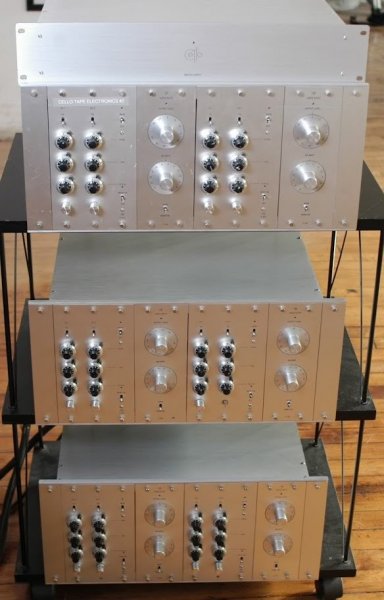Yes, Christian's excess bass problem is likely due to un-corrected playback head "bumps", but sometimes it can have nothing to do with that. Some RTRs I've tested that have switchable EQ (NAB/IEC), only switch the HF EQ. They leave the bass EQ always in the NAB position. (NAB bass EQ is a 3db boost @ 50Hz in record and a 3 db cut @ 50Hz in play).
If you were to record on one of those decks set to IEC EQ (with an improper NAB record bass boost) and then play back on another deck with standard IEC EQ (which has flat bass response), then the resulting tape would be bass heavy. 50Hz would be boosted 3 db.
As has been mentioned in this thread, bass response can definitely be altered from flat by the play head. However, almost any decent quality deck you record on will have flat bass response. I'm referring here strictly to the signal recorded on the tape. The recorded bass signal will be quite flat (assuming IEC EQ) and not have any "bumps". Reason is that it's easy to design a record amp with flat bass response (flat down to 20 or 30 Hz) and also because a decent-quality record head does not significantly effect bass response. So, in theory, if one were to listen to many first generation tapes made on many different machines, the bass should be quite flat in all of them. However, the majority of "master tapes" are 2nd or 3rd generation, so yes, the random effects playback head bumps do come into play.
Play head "bumps" are caused by the shape of the head surface and other head-design factors. Some heads have small bumps and those should be ignored. Some heads can have a 5-6 db bass bump, however. Heads like that should be corrected by introducing a low-end electrical response cut to the play amp. This type of compensation should only be done as a last resort because the bass quality (phase response) can sometimes be degraded as a result.
To measure low-end play response and see if you have unacceptable head bumps, you can't play a standard test tape. First you need to verify that your play amp's bass response is, in-fact, flat (for IEC) or has a -3 db cut at 50 Hz (for NAB). This is done by injecting test-tones into the play head via a "loop generator". Then you need to verify that your record amp is, in fact, flat (for IEC) or has a +3 db boost @ 50Hz (for NAB). You do this by connecting a 100 ohm resistor in series with the record head ground lead. Then turn off the bias oscillator and measure the audio voltage drop across the resistor. Check tones 20Hz to 1KHz. If correct, then record and play back the same low frequency tones (20Hz to 1KHz). Any deviations from flat bass will be the result of "head bumps". If only, say, 2 db boost at 30 Hz, then do nothing. If a lot more, then consider rolling off the low-end of the play amp electronics. This is usually done by changing a resistor value in the play amp EQ stage feedback loop. This is the resistor change that Myles was referring to.
So at least for first-generation tapes, low-end "head bumps" don't vary tape to tape. They will for multiple generation tapes, of course, since playback heads are involved with those. Differences in bass response we hear can be a play head to play head variation. Or a play amp that has been compensated for head bumps vs. a head amp that has not been compensated for head bumps. BTW, decks fitted with very high quality play heads typically don't have or need any bass compensation/correction in the play amp. That's the best way to go sound-wise.


